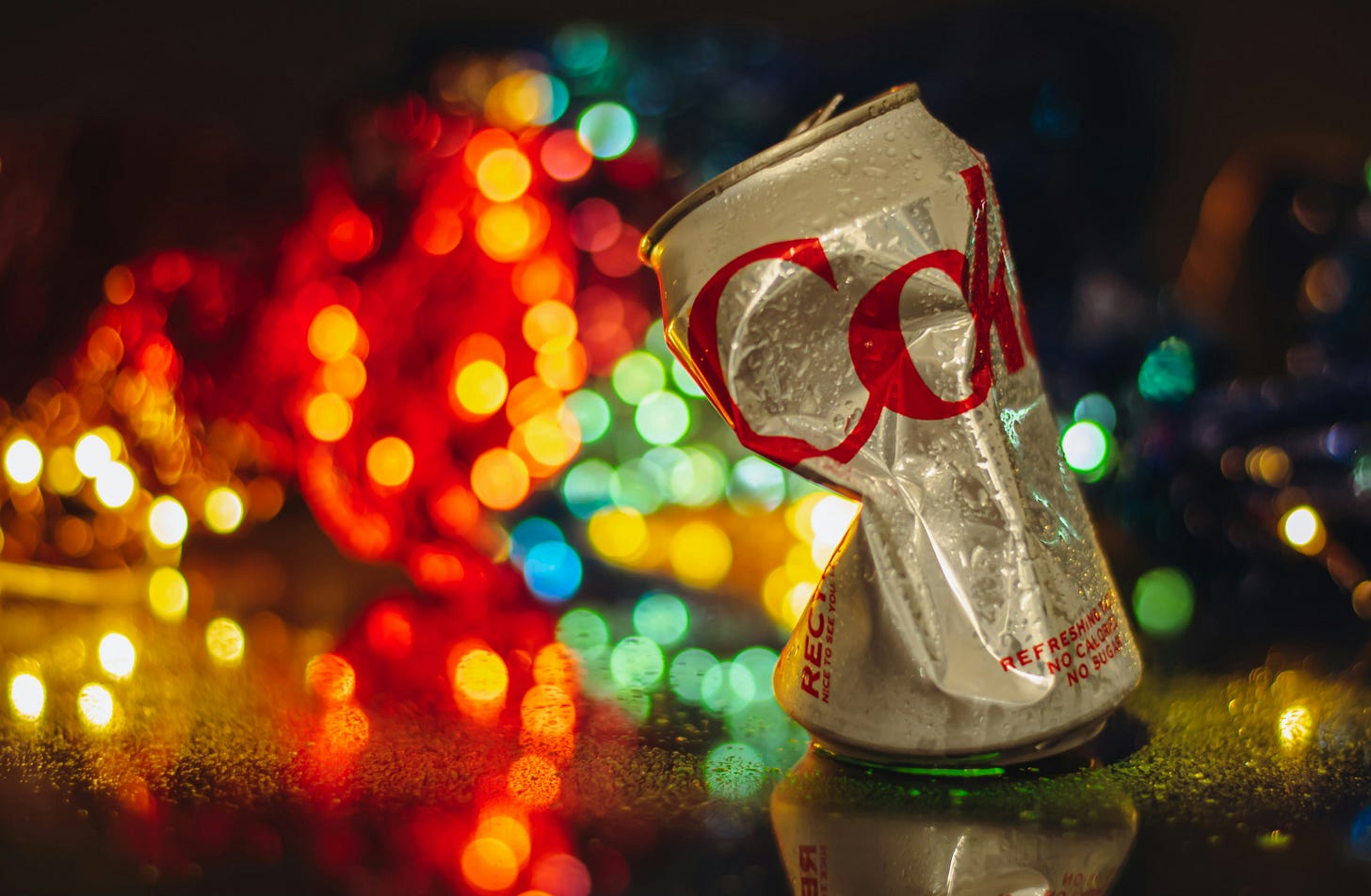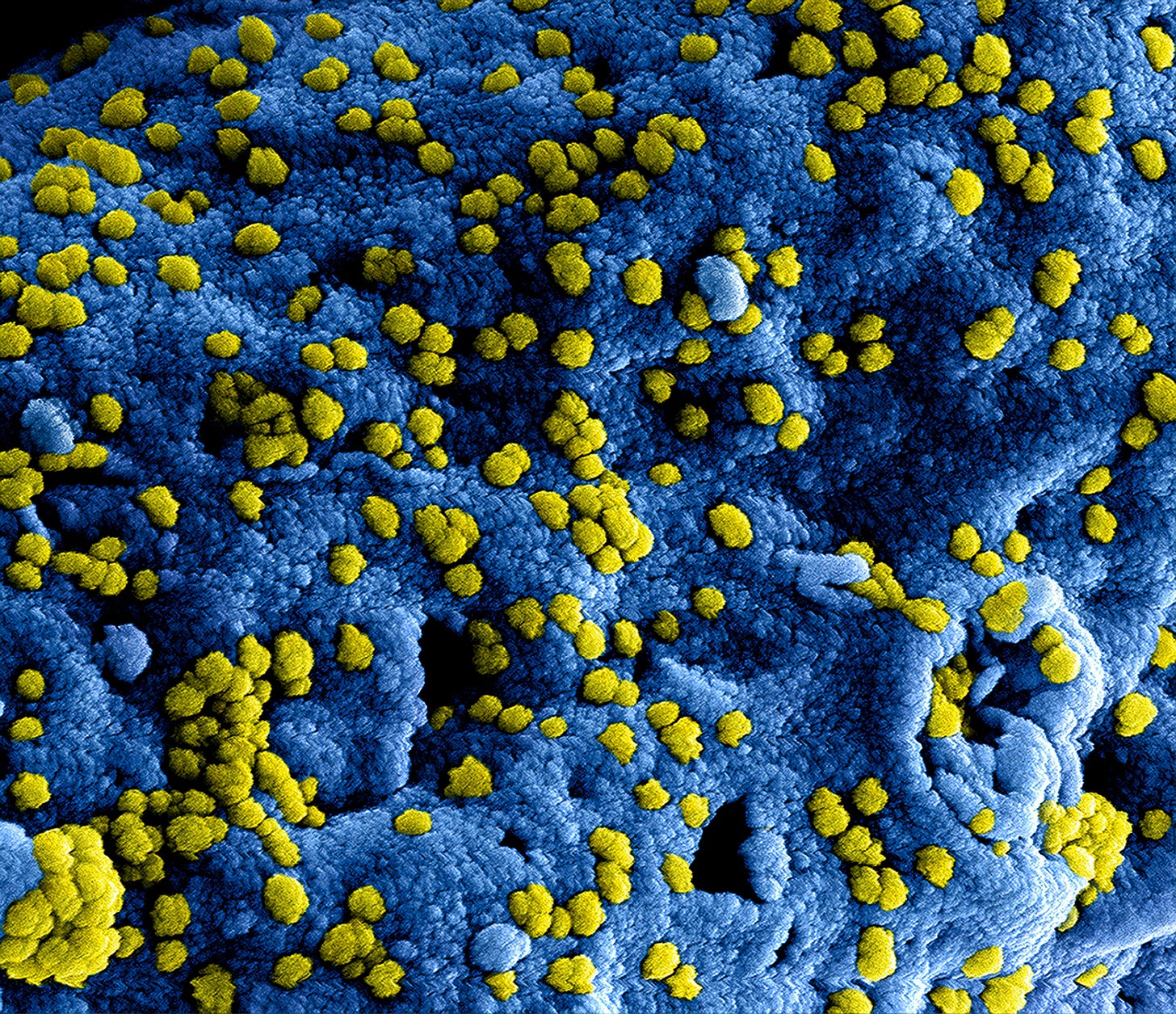Artificial Sweeteners -- Yea or Nay?
Is that Diet Coke a cruise missile of death for your microbiome?
I’ve long championed the use of aspartame (Equal, Nutrasweet, Neotame, Advantame) for blood sugar control and lookin’ good naked. When people maligned it for being dangerous – possibly being neurotoxic, causing a paradoxical increase in body fat or even cancer – I’d buck aspartame up by telling it that they were just jealous and that it was a good boy and that it should just pick itself up and get back in that protein powder, dessert mix, coffee, diet soda, or whatever food was lucky enough to have it.
After all, aspartame is comprised of aspartic acid and phenylalanine, two amino acids, so how could it be bad? Why, putting some in your body would be sort of like eating a pork chop, minus the 18 other common amino acids the pork chop contains. Well, maybe not, but really, how could two naturally occurring amino acids, ones that are contained in just about any protein food we eat, be potentially harmful?
Well, don’t tell aspartame, but I’ve since come to wonder if maybe it ain’t completely benign. Likewise, I’ve begun to view most commonly available sugar substitutes with a slightly jaundiced eye that’s the exact color of a Splenda package, another member of the zero or close-to-zero calorie sweetener family.
Hence this article where I explore why some sugar substitutes may be healthier than others and make a recommendation or two as to which one(s) you should be putting in your morning coffee.
It’s All About the Gut, ‘Bout the Gut…
You’ve likely been hearing murmurings about the importance of gut health, how a well-regulated gut may be intimately involved in human health, going so far as to even affect our personalities and the size of male gonads. Conversely, an alteration in the composition or functionality of the gut can cause a condition known as dysbiosis, possibly leading to systemic inflammation, metabolic disturbances, inflammatory bowel disease (IBS), and even type 2 diabetes.
I don’t need to go into all the different types of bacteria in the gut, but there are two that we need to take note of. First up is the Firmicutes community, of which contains roughly 200 separate genera of bacteria, followed by the Bacteroidetes community, of which there are roughly 700 distinct species. Together, these two groups of bacteria comprise roughly 90% of the total inhabitants of the gut.
What’s of particular importance is that the ratio of these two communities has been shown to influence gut homeostasis and the development of various diseases. For instance, a higher Firmicutes to Bacteroidetes (F/B ratio) is triggered by a disproportionate number of Firmicutes, which is frequently linked to obesity. Conversely, a higher number of Bacteroidetes in comparison to Firmicutes is associated with IBS.
There are other ways the microbiome can influence biological processes, too. They play an important role in extracting nutrients from food, as well as playing a critical role in the synthesis of bioactive substances like vitamins, amino acids, and lipids, not to mention the critical role they play in modulating the immune system.
As you might guess, what we eat can affect the F/B ratio and the microbiome in general. For instance, diets heavy in plant matter (fiber) promote the growth of both Firmicutes and Bacteroidetes, but diets rich in fats and protein promote a disproportionate rise in the Bacteroidetes family, possibly leading to, in the long term, an impaired immune system long with the possibility of various metabolic diseases. Diets high in carbohydrates lead to a significant decrease in microbial variety, which can lead to wide variety of disparate ailments.
Further, diets high in processed foods and saturated fat can also disrupt the bacterial community, leading to poor glycemic control (high blood sugar) and, potentially, type II diabetes.
Many of us, in an attempt to mitigate the damage from an unhealthy diet or a daily Nebuchadnezzar of Diet Coke emulate Jamie Lee Curtis and eat yogurt. It’s an admirable but potentially ineffective strategy. After all, the average container of yogurt might contain hundreds of billions of bacteria, but the average human gut contains around a hundred trillion.
Expecting yogurt to radically change your microbiome for the better is like dropping a family of Lithuanians into downtown Los Angeles and expecting that the Lithuanians will rapidly displace the population and the landscape will soon be peppered by restaurants serving nothing but borscht and potato pancakes.
So where does that leave non-nutritive sweeteners (NNS)?
Human Sacrifice! Dogs and Cats Living Together!
Let’s get this out of the way: There’s little evidence that the use of NNS leads to cancer. I know, I know, thousands of social media posts say otherwise, but there’s scant evidence of it and those studies that have found a link almost universally involve animals taking hundreds if not thousands of times the dosage of what a human might reasonably ingest.
Secondly, there’s a lot of nattering about the use of NNS leading to weight gain. Again, almost all the studies – at least the ones that I’m aware of -- that have shown this association used animals, again ingesting large amounts of artificial sweetener.
Lastly, there’s the dumb methanol thing -- the claim that aspartame converts to methanol, a neurotoxic chemical. It’s true, but for the umpteenth time, it’s a question of dosage: a glass of orange juice contains far more methanol than a 12-ounce can of Diet Coke, perhaps several times more.
But here’s where I carefully, oh-so carefully as to not get bit by the pumas of reason lurking in the bushes, offer some seemingly contradictory info. NNS can seemingly affect the gut, particularly the F/B ratio, which might potentially lead to a handicapped immune system which could plausibly allow cancer to develop. Likewise, an NNS-caused disruption to the F/B ratio, as mentioned above, could theoretically lead to some weight gain, or at least make it harder to lose weight. (It’s important to note here, though, that in the vast majority of cases, the use of NNS is a valuable tool in blood sugar and weight management.)
So, do NNS affect the microbial biome, leading to dysbiosis and a microbial society where the equivalent of human sacrifice, dogs and cats living together…mass hysteria is the norm?
Let’s machete our way through the research. Initially, almost all the NNS were considered to be inert because due to their limited absorption in the gastrointestinal tract. Most of them skip through the intestinal tract unscathed like entrants in the Michael Scott Dunder Mifflin Scranton Meredith Palmer Memorial Celebrity Rabies Awareness Pro-Am Fun Run Race for the Cure.
Aspartame, however, is almost completely broken down into its constituent amino acids, ensuring that almost none of the entire molecule reaches the bloodstream. Its amino acids are distributed throughout the body with no apparent ill effects. The important point is that aspartame, in its whole form, can’t interact directly with colonic microbiota… or can it?
What the Studies Show
What the studies show on aspartame, sucralose, acesulfame-K, and saccharine are kind of a mess. Animal studies on each of the sweeteners above indicate, with seeming certainty, that they do indeed have adverse effects on the microbiome.
Even though a negligible amount of these sweeteners reach the intestine, a few studies have shown that gut microbiota can metabolize that small amount, leading to a number of biological effects. Some of these sweeteners can be used as a carbon source by bacteria, leading to changes in their metabolic activity and hampering the production of short-chain fatty acids (SCFA) such as butyrate, propionate, and acetate. That’s not usually desirable because these SCFA have an anti-inflammatory effect (thereby potentially preventing IBS), in addition to modulating glucose metabolism. They also can reduce the populations of certain beneficial gut bacteria or increase the numbers of certain pathogenic bacteria.
One research paper gives additional damning claims: “NNS can also alter the expression of genes involved in bacterial metabolism, altering the composition and function of the gut microbial community. They were also reported to be able to affect the release of gut hormones and neurotransmitters, influencing gut motility, nutrient absorption, and the composition of the gut microbiome, thus inducing alterations in glucose metabolism.”
(This alteration of glucose metabolism, along with changing the F/B ratio I wrote about earlier, might be the explanation behind the observation that diet soft drinks could, paradoxically, lead to some small weight gain instead of fat loss.)
So animal studies are fairly conclusive, but what about human studies? That’s where things get murky. These studies are far fewer in number and while some of them mirror the results of animal studies, others show little to no effect of artificial sweeteners on the human gut biome. I know, muy frustrating, but keep in mind that the human studies (as they always do) varied in the number of subjects involved and their lifestyle and the foods they ate, all of which influence the baseline human gut microbiome and their response to non-nutritive sweeteners.
Plus, when you throw in all the other things human beings do to torch their microbiome – alcohol, smoking, rotten eating habits, even using mouthwash -- in addition to the various environmental factors (the outside environment we live in and the structures we reside in) that can affect the gut, you wonder just how impactful NNS are in the scheme of things.
Still, there’s enough research out there to make me feel a little hinky about most artificial sweeteners, so much so that I went on a hunt for some that appear to be healthier.
The Harry, Hermione, and Ron of Sugar Substitutes
There are three sweeteners that have caught my attention: monk fruit, stevia, and allulose, all of which are considered “natural” (although at least one, stevia, requires quite a bit of processing in order for it to sweeten your coffee).
Monk fruit comes from a small fruit that originated in Southern China and its juice is much sweeter than sucrose, hence its usefulness as an NNS. Unlike some of the artificial sweeteners that appear to negatively affect the microbiome, the monk fruit extract Mogroside V (the thing that makes it taste sweet) appears to have prebiotic potential, meaning it might promote the growth of beneficial bacteria that lead to the increased production of SCFA, thereby reducing inflammation.
Stevia, derived from a plant that’s native to Paraguay and Brazil, has shown similar beneficial effects on the human gut, also leading to the production of SCFA that promote good colon health, particularly for those suffering from Crohn’s or IBS.
Our third “good guy” sweetener is allulose, a rare sugar found in figs, raisins, maple syrup, etc. It has a similar structure to fructose but it’s not metabolized in the same way. In fact, it’s poorly absorbed by the body and has minimal effect on blood glucose levels. Like monk fruit and stevia, allulose appears to aid in the production of SCFA.
Most importantly, no studies on any of the three natural sweeteners addressed here have shown any negative side effects in humans.
I need to say, though, that none of these natural sweeteners taste better than the sugar they’re supposed to replace. Manufacturers are keenly aware of this, so they often “cut” monk fruit, stevia, and allulose products with erythritol, a sugar alcohol. The substance is often added to improve the taste and texture of the natural sweeteners (it’s said to have a “synergy” with the natural sweeteners), in addition to acting as a bulking agent so that the products are easier to measure and use like regular sugar.
Unfortunately, nascent research on erythritol suggests that it might increase the risk of heart attack or stroke. I suspect it is, as it is so many things, a question of dosage and that using a couple of packets of artificial sweetener cut with erythritol a day wouldn’t lead to any problems, but hey, who needs the risk, no matter how small?
No worries, though, because pure, unadulterated monk fruit, stevia, and allulose products are readily available. These sweeteners are even trickling down into various small-market soft drinks and snacks.
Let’s hope the trend continues and that manufacturing can keep up with demand.
###






Heya,
Well, this is good news for someone as myself, a self professed longevity seeking musclehead (former competitive 350 lb powerlifter/300 lb+ bodybuilder) who's downsized to 255 or so lb.s @ 63+ years young, and hoping for MUCH more.
So, full embarrassing disclosure time, when I give blood, it's GREEN, like Diet Mountain Dew is my crack green...uh...yeah, Mr. Fitness/Nutrition/health...ingests COPIOUS amounts every mickey freaking day. (You know I kid, but it SHOULD be green with how much I drink)
Guess I rolled those dice and got lucky this time around...maybe. I've done the research that I could to reassure myself, but of course Obi Wan (TC) just made my day, thank you brother. And moving from one icon to another, hopefully we can all find the things that make us live long and prosper. :P
Have a great weekend.
So no more Diet Dr. Pepper?